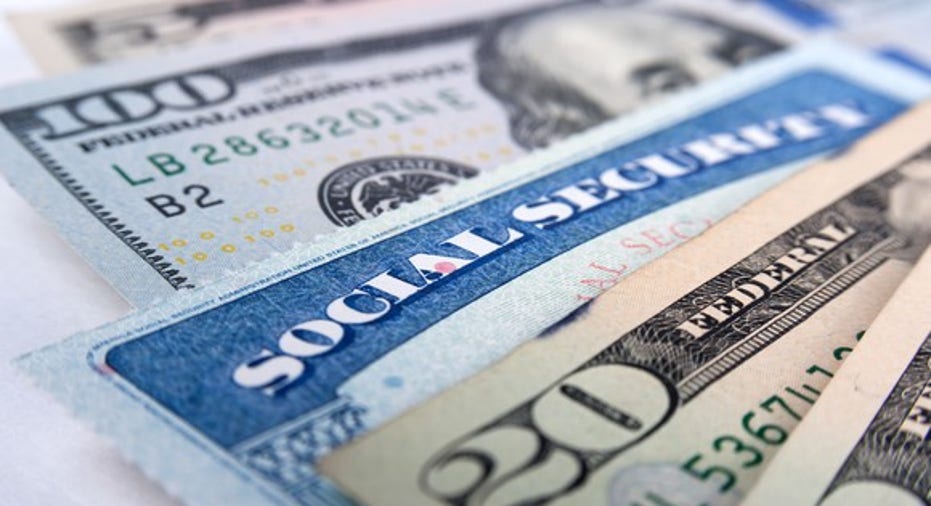How Much Will I Pay in Social Security Taxes?

Social Security taxes are one of only two itemized tax items that come out of Americans' paychecks, along with taxes for Medicare, and these are assessed differently than federal and state income taxes. Here's how much you'll pay in Social Security taxes in 2017, and how this may change in the coming years.
The Social Security tax rate
Here's the easy part. Social Security tax is assessed on earned income at a rate of 6.2%.
Technically speaking, the Social Security tax rate is 12.4%, but half of this amount is paid by the employee (you), and the other half is paid by your employer.
Image source: Getty Images.
Also, there is a maximum amount of income that can be subject to Social Security tax each year. As of this writing, this amount, also known as the Social Security wage base, is $127,200 for 2017. This amount is adjusted annually.
So, if you're a high earner, Social Security taxes might not be assessed on all of your income. Here are a couple of examples:
- Let's say that you work a full-time job and that you earn $80,000 in 2017. This is under the maximum taxable amount of earnings, so the 6.2% tax rate would apply to all of your earnings, resulting in a total of $4,960 in Social Security tax.
- On the other hand, let's say that you're an executive who earns $250,000. Since this is more than the maximum amount of earnings, you'll only pay Social Security tax on the first $127,200, which translates to $7,886.40. This is the highest possible Social Security tax for 2017, if you work for an employer.
If you're self-employed, you may have to pay twice as much
If you don't work for an employer, and have self-employment income, you are considered to be the employee and the employer for tax purposes. Therefore, you are responsible for paying both sides of the Social Security tax. Combined with the employee and employer portions of Medicare taxes, this is known as the self-employment tax.
For example, let's say that you run a consulting business and your IRS Schedule C shows business profit of $75,000. The employer and employee Social Security tax rates add up to 12.4%, as I mentioned, so you would pay $9,300 in Social Security tax for 2017.
It's also important to mention that the same $127,100 wage cap applies to the self-employed, which translates to a maximum Social Security tax of $15,772.80.
There are some potential ways around this. For instance, if a small business elects to be treated as an S-corp, some of the business income can be called a profit distribution, and Social Security tax is not assessed on this portion of the income. There are other considerations when choosing a business tax structure, and quite frankly, they are beyond the scope of this discussion. The point is that although self-employed individuals pay a total rate of 12.4% Social Security tax, not all self-employed people actually pay this rate on every single dollar of profit.
The rate or wage cap could change in the future
Finally, it's important to mention that the Social Security tax rate, or the maximum amount of taxable wages, can and probably will change in the future.
Simply put, Social Security will not be sustainable after 2034 without a major overhaul. In a nutshell, the program is expected to start paying out more than it's bringing in over the next several years. And there are only two main ways to fix the problem -- benefit cuts or tax increases.
Benefit cuts are highly unpopular among the American public, and President Trump has vowed not to cut Social Security. On the other hand, the majority of Americans are actually willing to pay higher Social Security taxes if it means the program will be financially secure for the foreseeable future.
Tax increases could take the form of an increase in the Social Security tax rate (say, to 7.2% or 8.2%, two popular proposals), or an increase or elimination of the taxable wage base. The exact reform package passed to fix Social Security, and when it will happen, is anyone's guess at this point. However, it's important to be aware that there's a real possibility that the Social Security tax rate or the taxable wage base -- or both -- could change in the coming years.
The $16,122 Social Security bonus most retirees completely overlook If you're like most Americans, you're a few years (or more) behind on your retirement savings. But a handful of little-known "Social Security secrets" could help ensure a boost in your retirement income. For example: one easy trick could pay you as much as $16,122 more... each year! Once you learn how to maximize your Social Security benefits, we think you could retire confidently with the peace of mind we're all after.Simply click here to discover how to learn more about these strategies.
The Motley Fool has a disclosure policy.